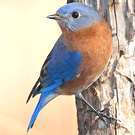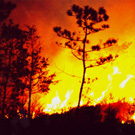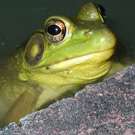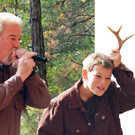| |
 |
Bluebird Trail
The group visits a few of the 25 nest boxes and four winter roost boxes strategically placed along the trail and learns how they are diligently monitored. During field investigations students examine the habitat, behavior, and nesting requirements of the once abundant species the Eastern bluebird. Approach quietly, and we may catch a glimpse of a bluebird.
1 1/2 - 2 hours |
|
 |
Fire Ecology
Students hike along the FireWise Trail and stop at several locations to identify evidence of wildfire, and observe fire management techniques including prescribed burning, fire buffers, and fire breaks. Learn the tower observer’s job at the “fire tower" and how to be firewise.
1 1/2 hours
|
| |
 |
Changing Forest
This program focuses on change in forest composition over time, called succession. Along the trail the group sees evidence of wildfire and insect infestation and the effects of carefully planned prescribed burning and forest management techniques. Students also discover how pioneers of this area utilized the forest.
1 1/2 to 2 hours
|
|
 |
Swamp Life
An investigative hike on the Swamp Life Trail introduces the fascinating forested wetlands. Students find swamp creatures, visit an informational kiosk with a “talking tree,” and look for swamp clues such as snags, blown down trees, pond life, and vernal pools. The group also observes sand point bars, a meandering stream, and an oxbow lake along the banks of the Toms River.
2 hours
|
| |
 |
Forest Products
Participants in this hands-on program learn about trees and shrubs used to make forest products, and may get an opportunity to touch, taste, and smell samples. Students also observe milling of sawlogs into lumber, growing shiitake mushrooms, bee pollination, and participate in making maple syrup at the sugar shack.
2 hours |
|
 |
Wildlife Habitats
Visit the interactive wildlife habitat learning station in the Loblolly Pine grove to identify signs of animals, search in a variety of habitats to find these signs, and observe techniques used to improve wildlife habitat. Students may also get a chance to examine and touch furs, feathers, and shells that once belonged to animals.
2 hours |





